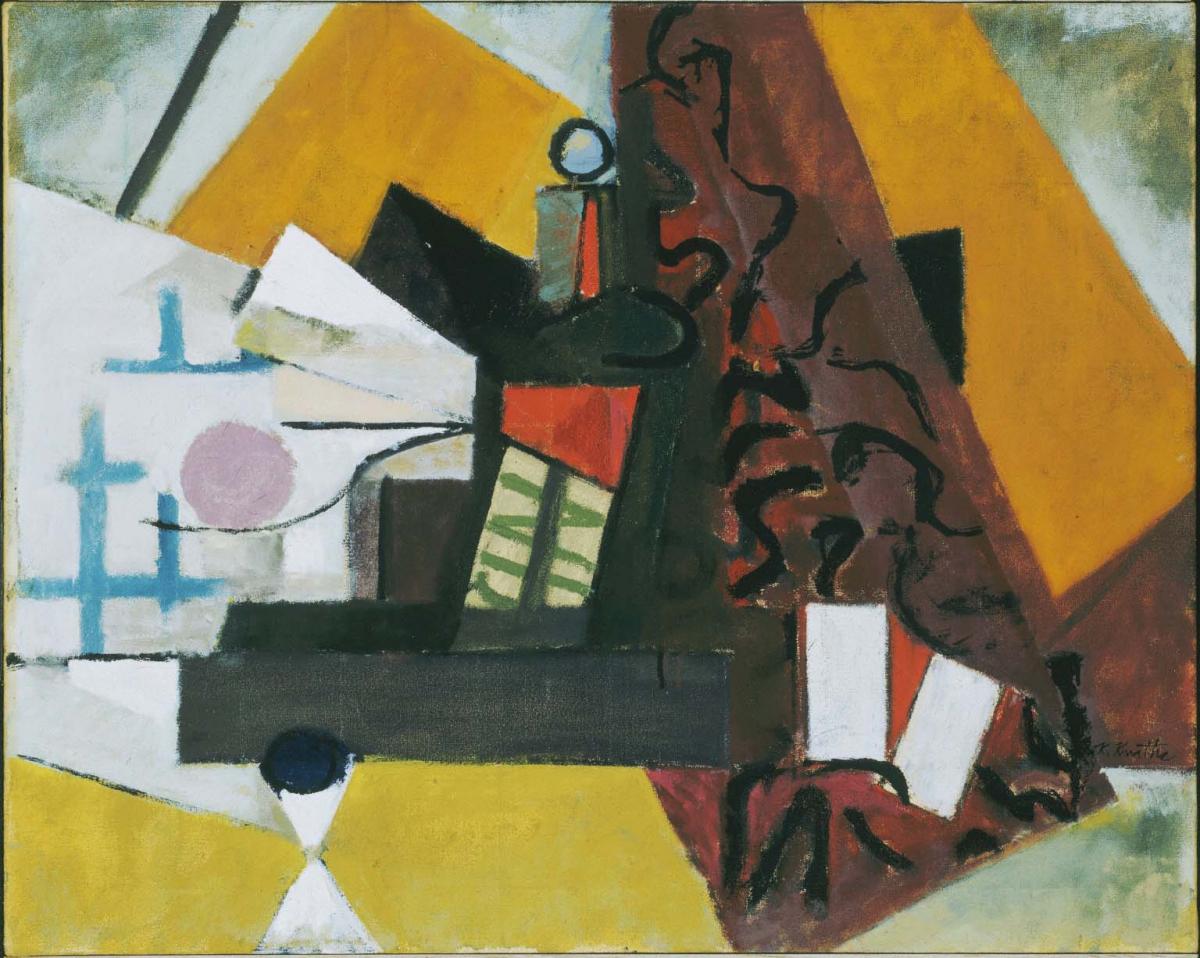Cin-Zin
Karl Knaths ( 1945 )

Karl Knaths was introduced to European modernism in 1913 when he was a guard for the Chicago venue of the Armory Show. Working independently, Knaths developed a highly original style of Cubism that was particularly influenced by the work of Paul Cézanne, Georges Braque, and Henri Matisse. Design is always Knaths’s first consideration. His paintings are at once spontaneous and sensual even as they rely on a system of unique color harmonies carefully chosen in advance, as well as a generally developed structure of spatial proportions.
The highly abstracted Cin-Zin, with its layered planes of vivid color, emphasizes the interrelationship of patterns and shapes in an ordered progression from the smallest unit, a circle, to the final total unity of the containing rectangle. Knaths has completely eliminated any dimension with the image, emphasizing the flatness of the picture plane. Like the Cubist experiments of Braque and Picasso, Knaths includes abstracted letters, in this case “CIN” on the central bottle refers, perhaps, to the Italian vermouth Cinzano.
Duncan Phillips was a big supporter of Knaths and admired his individual style. In an exhibition of Knaths’s work at the Phillips Memorial Gallery, Phillips wrote in the catalogue, “When I first saw the paintings of Karl Knaths…what impressed and charmed me were the integrated qualities of fresh vision and self-reliant invention. Then, too, I was fascinated by the unusual combination of angular calligraphy with subtle color and sensitive brushwork.” Cin-Zin, acquired by Phillips in 1945, exemplifies all of Knaths’s talents that Phillips so highly regarded.